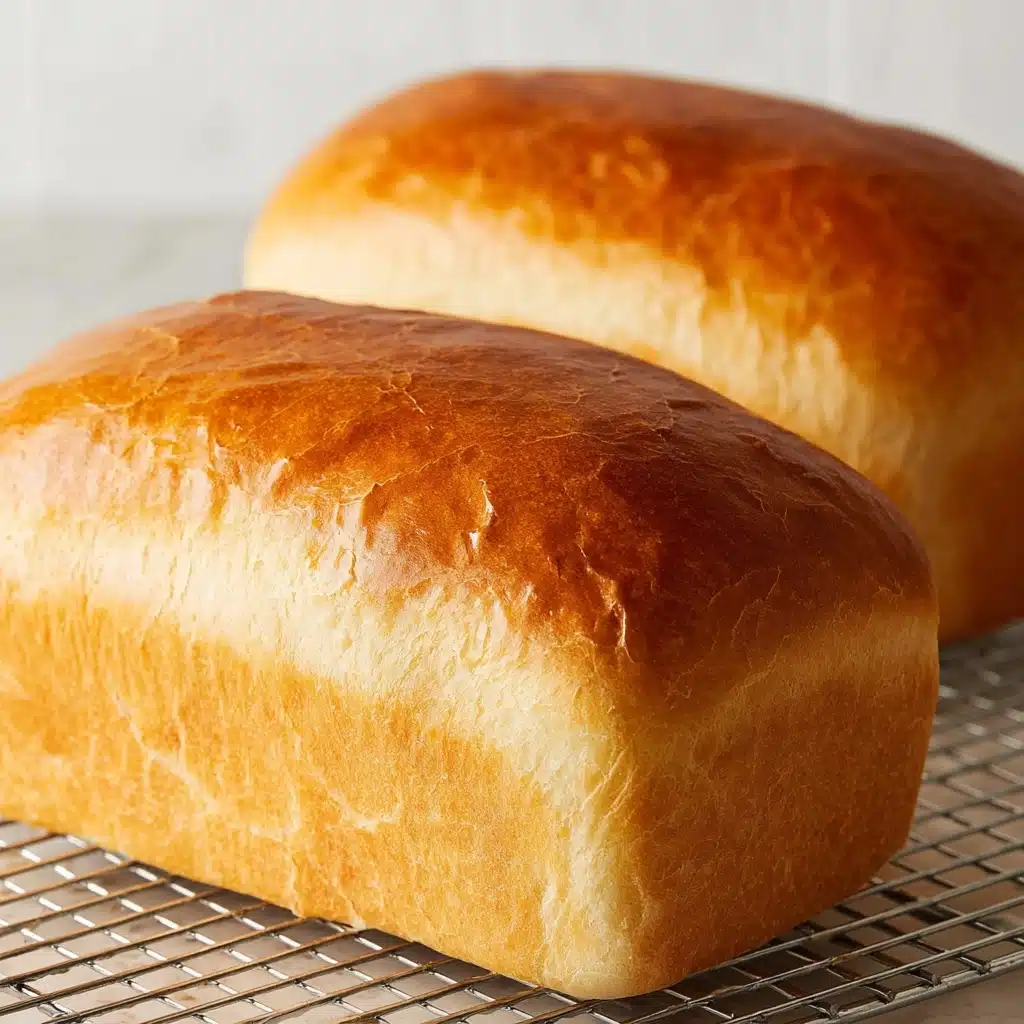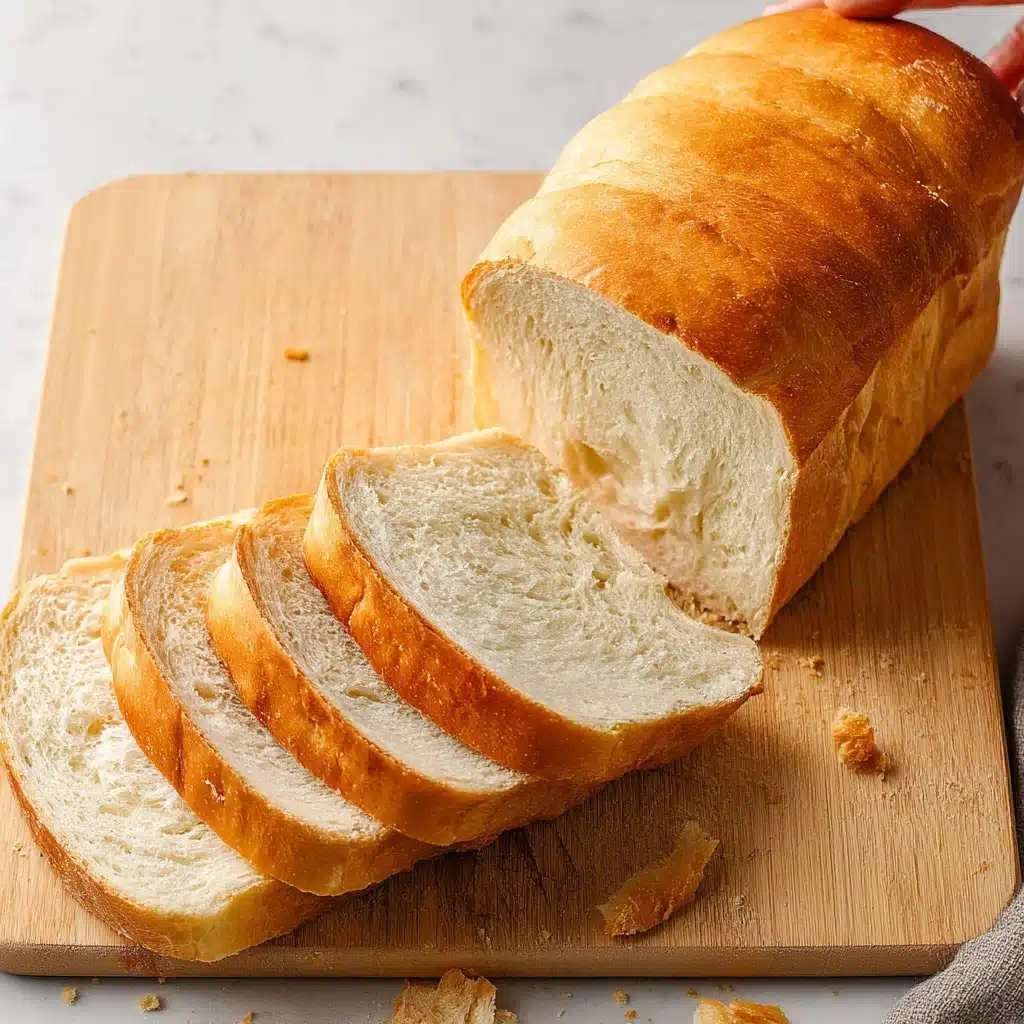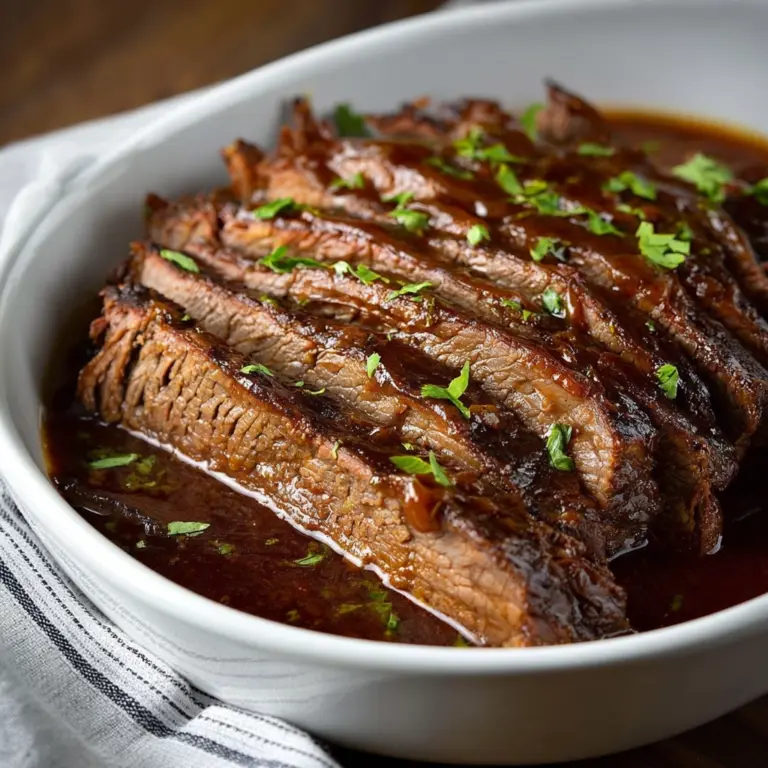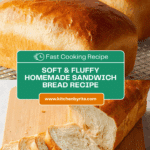Sandwich Bread Recipe
If you’ve ever dreamed of baking the perfect sandwich bread at home, your moment has arrived. This Sandwich Bread recipe delivers that soft, fluffy texture and golden crust that makes every bite melt-in-your-mouth delicious. It’s a wonderfully straightforward recipe with simple ingredients that come together to create a loaf ideal for sandwiches, toast, or just enjoying plain. Baking your own Sandwich Bread is not only satisfying but also lets you control the freshness, flavor, and texture in a way store-bought bread simply can’t match.

Ingredients You’ll Need
What’s beautiful about this Sandwich Bread recipe is how basic and accessible the ingredients are. Each one plays its part perfectly—from flour giving structure to butter offering tenderness, and honey adding a touch of natural sweetness that rounds out the flavors.
- Bread flour: The foundation for a chewy, elastic texture that holds the loaf together beautifully.
- Lukewarm water: Activates the yeast gently and helps create a soft dough; you can substitute half with milk for added richness.
- Unsalted butter: Adds moisture and a tender crumb, plus it’s used to coat the pans for a golden crust.
- Honey: Sweetens the dough subtly while feeding the yeast for a nice rise and golden color.
- Instant yeast: The powerhouse behind your bread’s rise, giving it that perfect fluff.
- Sea salt: Enhances flavor depth and helps balance the sweetness and richness in the bread.
How to Make Sandwich Bread
Step 1: Mix Your Ingredients
Start by adding the dry ingredients—bread flour, instant yeast, and sea salt—into your stand mixer bowl with the dough hook attached. This ensures the yeast and salt are evenly distributed, which is key to even rising and flavor.
Step 2: Add Your Liquids Slowly
While the mixer runs on a slow setting, gradually pour in the lukewarm water (or milk-water mix) followed by the softened butter and honey. The goal here is to get everything fully incorporated into a smooth, slightly tacky dough that pulls away from the bowl’s sides.
Step 3: Bulk Fermentation
Shape the dough into a round ball and place it back in the bowl. Lightly oil the dough and bowl edges, cover it with plastic wrap, and let it sit in a warm spot for about two hours. This bulk fermentation allows the yeast to develop flavor and build the gluten network that gives your bread its structure.
Step 4: Prepare Your Loaf Tins
While the dough rises, generously butter the inside of your 1lb loaf tins to prevent sticking and promote a lovely crust formation.
Step 5: Shape and Divide the Dough
Once risen, punch down the dough, then divide it equally into two portions. On a floured surface, gently flatten each piece into a rectangle roughly the size of your tin, then roll and tuck the dough into tight logs. This shaping step sets the stage for a beautifully structured loaf.
Step 6: Final Proof and Bake
Place your dough logs seam side down in the buttered tins. Cover loosely and allow them to proof for 40 minutes to an hour until they rise above the edges. Preheat your oven to 350°F (176°C), then bake the loaves for 40 to 42 minutes until they turn a rich golden brown. Brush the tops with butter — or a honey butter mix for an extra glow and softness.
How to Serve Sandwich Bread

Garnishes
This Sandwich Bread shines on its own but can be garnished with a light brushing of butter right after baking, or a sprinkle of seeds like sesame or poppy before baking for a little extra flair and texture.
Side Dishes
Because of its tender crumb, this bread pairs exceptionally well with hearty soups, silky butters or cream cheeses, and smoky deli meats. It’s the perfect sidekick for anything from a classic tomato soup to a decadent stew.
Creative Ways to Present
Try slicing this Sandwich Bread thick for grilled cheese sandwiches, or cut it into fingers for a charming tea-time snack. Toast slices and top with avocado and chili flakes for a simple, elegant brunch that feels special without fuss.
Make Ahead and Storage
Storing Leftovers
Once completely cool, store leftover Sandwich Bread in an airtight container or wrapped in a clean kitchen towel at room temperature. It stays fresh for about three days—perfect for quick breakfasts or midday sandwiches.
Freezing
For longer storage, slice the bread and freeze it in a zip-top bag. This way, you can toast slices directly from frozen without losing that fresh-baked flavor and softness.
Reheating
To revive your sandwich bread, toast slices or gently warm a whole loaf in the oven wrapped in foil. Brushing with a little butter before warming adds a delightful richness and fresh-baked feel.
FAQs
Can I substitute bread flour with all-purpose flour?
You can use all-purpose flour, but bread flour works best because it has a higher protein content which helps create that chewy, elastic texture that Sandwich Bread is known for.
What happens if I don’t have instant yeast?
If you don’t have instant yeast, you can use active dry yeast, but you’ll need to proof it first in warm water before adding it to the mix.
Is it okay to use milk instead of water?
Absolutely. Replacing half the water with milk helps make the sandwich bread richer and softer, giving it a beautiful golden crust and tender crumb.
Can I make this recipe by hand instead of a stand mixer?
Definitely! Kneading by hand takes a bit more effort and time, about 10-12 minutes, but the process and results are just as rewarding.
How do I know when the bread is done baking?
The bread should be a deep golden brown and sound hollow when tapped on the bottom. An instant-read thermometer will show about 190°F (88°C) when fully baked.
Final Thoughts
Baking your own Sandwich Bread is such a fulfilling experience, especially when you pull a fresh loaf out of the oven that’s soft, fluffy, and bursting with flavor. Give this recipe a try, and you might find yourself never going back to store-bought bread again. It’s worth every minute of effort for that unbeatable homemade taste and warmth.
PrintSandwich Bread Recipe
This classic sandwich bread recipe yields a soft, fluffy, and golden brown loaf perfect for your homemade sandwiches. Made with bread flour, honey, butter, and yeast, this bread balances a slightly sweet flavor with a tender crumb and soft crust. The step-by-step instructions guide you through mixing, proofing, and baking to achieve bakery-quality bread at home.
- Prep Time: 15 minutes
- Cook Time: 40 minutes
- Total Time: 3 hours (including rising times)
- Yield: 2 loaves (1 lb each) 1x
- Category: Bread
- Method: Kneading and Baking
- Cuisine: American
- Diet: Vegetarian
Ingredients
Dry Ingredients
- 6½ cups bread flour
- 3 teaspoons instant yeast
- 3 teaspoons sea salt
Wet Ingredients
- 2 cups lukewarm water (or substitute with 1 cup milk and 1 cup water)
- 5 tablespoons unsalted butter, softened
- 2 tablespoons honey
For Greasing and Brushing
- 1 tablespoon unsalted butter for brushing the tops of the bread
- 1 tablespoon unsalted butter for greasing the loaf tins
Instructions
- Prepare the dry ingredients: Add the bread flour, instant yeast, and sea salt into the bowl of a stand mixer fitted with the dough hook attachment. Mix briefly to combine.
- Add wet ingredients gradually: With the mixer on slow speed, slowly pour in the lukewarm water, followed by honey, and finally softened butter. Knead the dough for 5 to 7 minutes until it forms a smooth, tacky but not sticky ball that pulls away from the sides of the bowl. Oil your fingers if dough feels too sticky for easier handling.
- Bulk fermentation: Shape the dough into a round, place it back into the mixing bowl lightly drizzled with oil on the edges and dough surface. Cover the bowl tightly with plastic wrap and let it rise in a warm place for about 2 hours or until doubled in size. This allows flavor development and gluten structure formation.
- Prepare loaf pans: While the dough is rising, generously butter the inside of two 1-pound loaf tins. Set aside.
- Shape the dough: After the dough has doubled, punch it down gently and turn it out onto a clean dry surface. Divide the dough into two equal portions (~670 grams each). Flatten one portion into a rectangle approximately the same width as the loaf tin. Roll from the edge closest to you away, then fold in the sides and continue rolling to form a tight log. Pinch the seam closed. Repeat for the second portion.
- Proof the dough: Place each dough log seam side down into the buttered loaf tins. Press lightly on the dough to release any surface bubbles. Loosely cover with plastic wrap and let rise for 40 minutes to 1 hour at room temperature until the dough rises above the edges of the tins.
- Preheat and bake: While proofing, preheat the oven to 350°F (176°C). Remove the plastic wrap and place the tins in the oven. Bake for 40 to 42 minutes or until the bread is deeply golden brown on top.
- Finish with butter: As soon as you remove the bread from the oven, brush the tops with softened butter to keep the crust soft and add a slight richness. Optionally, brush with honey for a touch of sweetness.
- Cool and store: Allow the bread to rest in the loaf tins for at least 10 minutes. Then transfer to a wire rack to cool completely. Slice only when fully cooled for best texture. Store leftover bread at room temperature in an airtight container for up to 3 days.
Notes
- For best accuracy, weigh ingredients if possible, especially the flour.
- The first rise is called bulk fermentation, essential for flavor and gluten development.
- Do not add extra flour when shaping to maintain the bread’s softness.
- Butter the loaf tins thoroughly to prevent sticking and help with browning.
- Brushing with butter after baking keeps the crust soft and improves flavor.
- Slicing bread while warm may lead to a gummy texture; always cool completely before slicing.
- Store leftover bread at room temperature, wrapped tightly to maintain softness, for up to 3 days.
Nutrition
- Serving Size: 1 slice (approx. 50g)
- Calories: 140
- Sugar: 2g
- Sodium: 230mg
- Fat: 3.5g
- Saturated Fat: 2g
- Unsaturated Fat: 1.3g
- Trans Fat: 0g
- Carbohydrates: 23g
- Fiber: 1g
- Protein: 4g
- Cholesterol: 7mg
Keywords: sandwich bread, homemade bread, soft bread, yeast bread, easy bread recipe, fluffy bread








